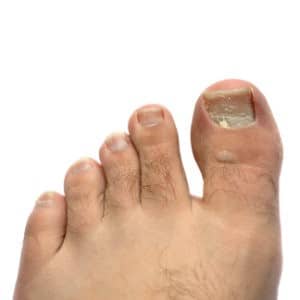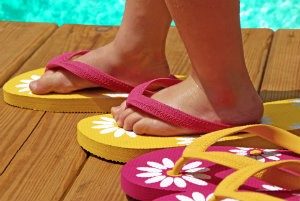Fungal Toenails
It can be quite disheartening to look down at your bare feet and see toenails that are distorted and yellow. This is an embarrassing condition – one that can make you self-conscious and reluctant to visit beaches in the summertime or wear sandals or open-toed shoes in public.
We know these feelings you might very well be having because we have helped many patients who have developed a case of toenail fungus!
While you’re in a less-than-ideal situation, the good news is that the treatment we’ve used to help other patients could potentially restore your toenails back to health. Now, fungal toenails are not something that will clear up on their own—actually, it only becomes worse over time—so call and request your appointment with the McVay Foot & Ankle team.
Why Do Fungal Toenails Develop?
Understanding how a case of toenail fungus develops is your first step in being able to avoid an embarrassing fungal infection. In this instance, the responsible fungus is of the dermatophyte variety (but sometimes molds and yeasts can also be the root cause of the infection).
The offensive microorganisms that cause unsightly toenails do not need sunlight. Moisture and warmth, however, are paramount for their survival. Accordingly, the microscopic fungal spores are often found and contracted at places like gym locker rooms, communal showers, and indoor swimming pools – all of which possess the right environments for fungal proliferation.
Usually, the microscopic organisms enter the body through either small cuts and scrapes or tiny separations between nails and their corresponding nailbeds. This can be especially problematic when infections set in the toes, since there is less blood flow in that area and the body’s immune system is less likely to detect and stop the infection.
Another potential source of fungal contamination is sharing nail equipment, such as toenail clippers. If you get your nails done at a salon, make sure their cleanliness standards are as high as yours.
People with lowered immune systems have a higher risk factor for these fungal infection than do those who are otherwise healthy.
Treating Toenail Fungus
When it comes to treating a case of fungal toenails, vigilance is key. The gold standard for this condition is twelve weeks of oral antifungal medications (provide you are healthy enough to take them). To compliment the oral medication, we also provide topical medication. For optimal effectiveness, you will need to file down the affected nails every week and apply the topical medication daily for one year.
For more severe infections, we may recommend removing the nail entirely and then apply medication to the nailbed. The hope then is that new clear and healthy nail tissue will grow back in.
It is important to note that a cure is not guaranteed. Additionally, the 2-year recurrence rate is rather high. That being said, your odds of successful treatment are much better if you adhere to the treatment regimen and follow appropriate precautions (for example, using antifungal products in your footwear).
Please keep in mind that the offensive fungus is hardy and toenails offer natural protection. Accordingly, there is no quick and easy path to clear nails. The physical damage to toenails from the fungus is irreversible and you may have to wait for several months so healthy nail tissue can replace it (when the fungus itself has actually been eliminated).
Prevent Fungal Toenails
Of course, we know you would prefer not to deal with the problem in the first place. To help with that, use the following fungal toenail prevention tips:
- Use daily hygienic practices. Washing your feet every day, and keeping toenails properly trimmed, is a starting point for reducing your risk of fungal toenails.
- Wear the right footwear. This means choosing moisture-wicking socks and shoes that allow the feet to breathe. Open-toed footwear and supportive sandals (not flip-flops!) can further help keep your toes dry and less hospitable to fungus.
- Use an antifungal product. Pick up antifungal powder or spray from the store, and then sprinkle or spray the product on your feet and in your shoes.
- Don’t pick or trim the skin around your nails. Doing so provides access to microorganisms and can lead to infection.
- Protect your feet in public. Places like indoor pool decks, gym showering areas, and locker room floors can be warm and damp, which are ideal conditions for fungal growth. Instead of walking on them barefoot, be sure to wear clean sandals or shower shoes.
We certainly hope you are able to avoid a fungal nail infection with these tips, but it can be tricky to completely remove all risk. Be sure to keep McVay Foot & Ankle in mind if you notice toenails that have become dull, darkened, distorted, and discolored. We will assess the condition and then provide the care you need!
For more information, or to request an appointment with our Colorado Springs practice, simply call (719) 266-5000 and our team will be happy to help.
Note: Please do not use the contact form to send extensive or Protected Health Information (PHI). Please phone our office instead.
© McVay Foot & Ankle. All Rights Reserved
Web Design by CP Solutions
Marketed by VMD Services
Privacy Policy | Terms & Conditions


